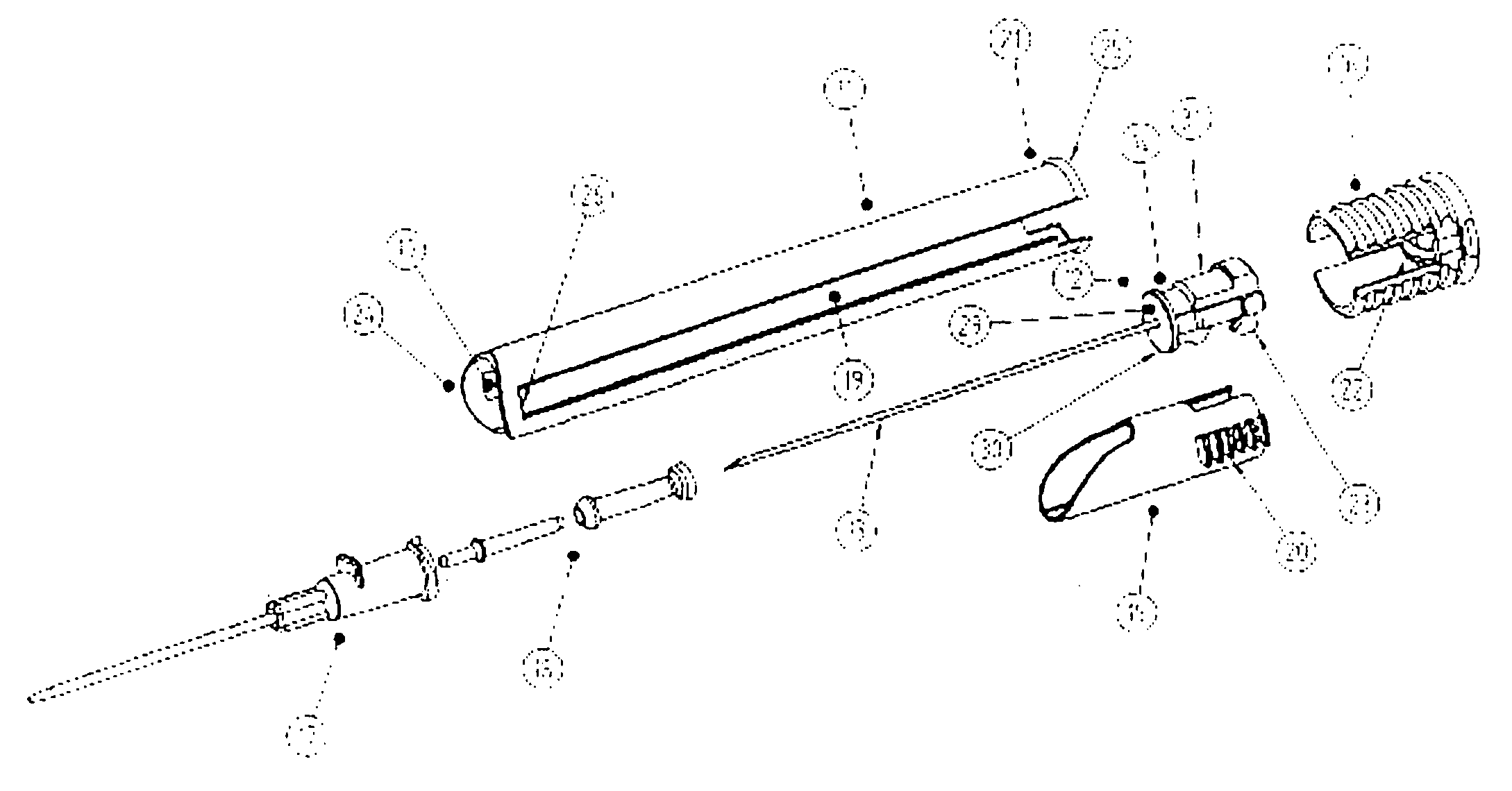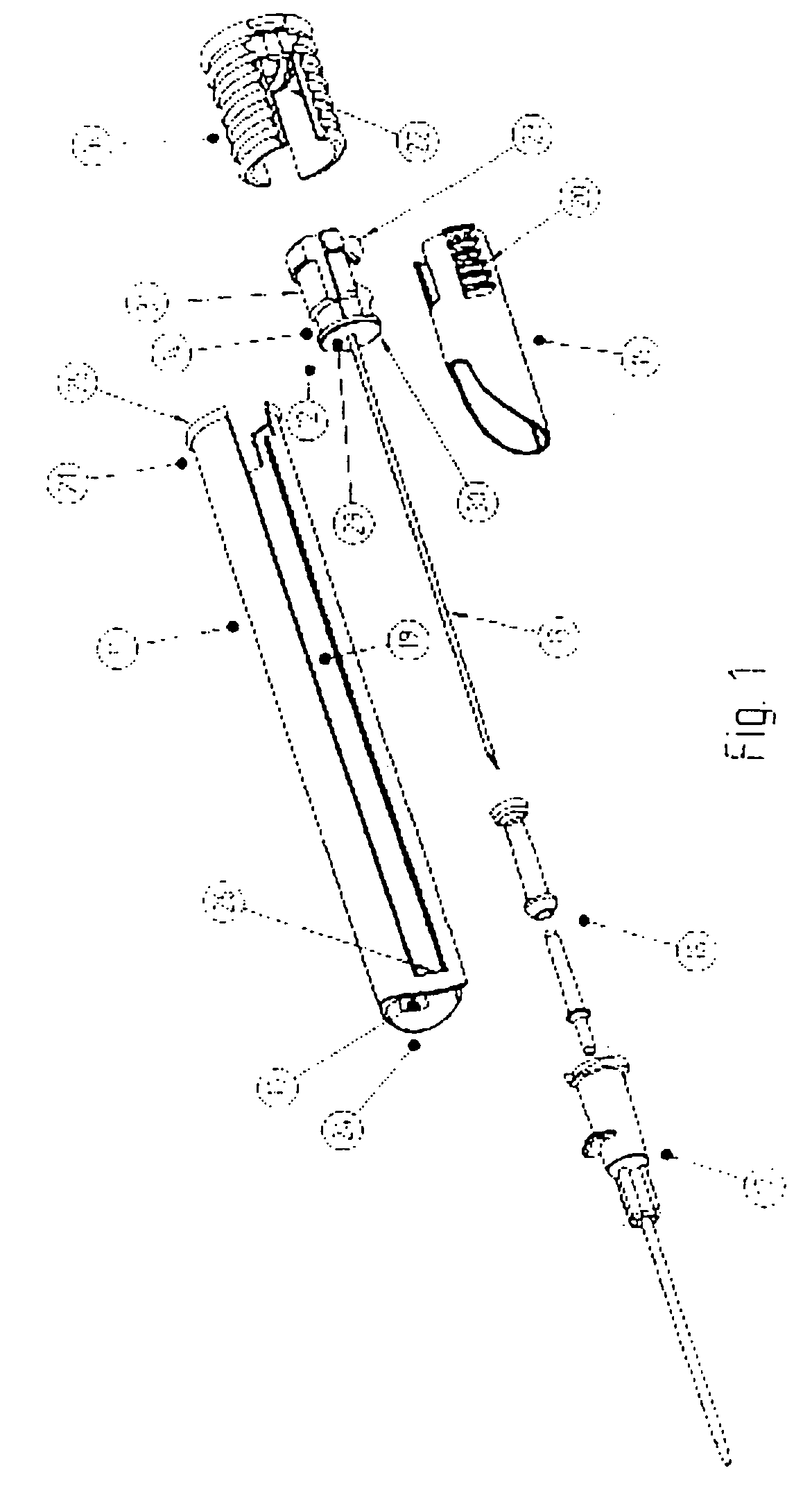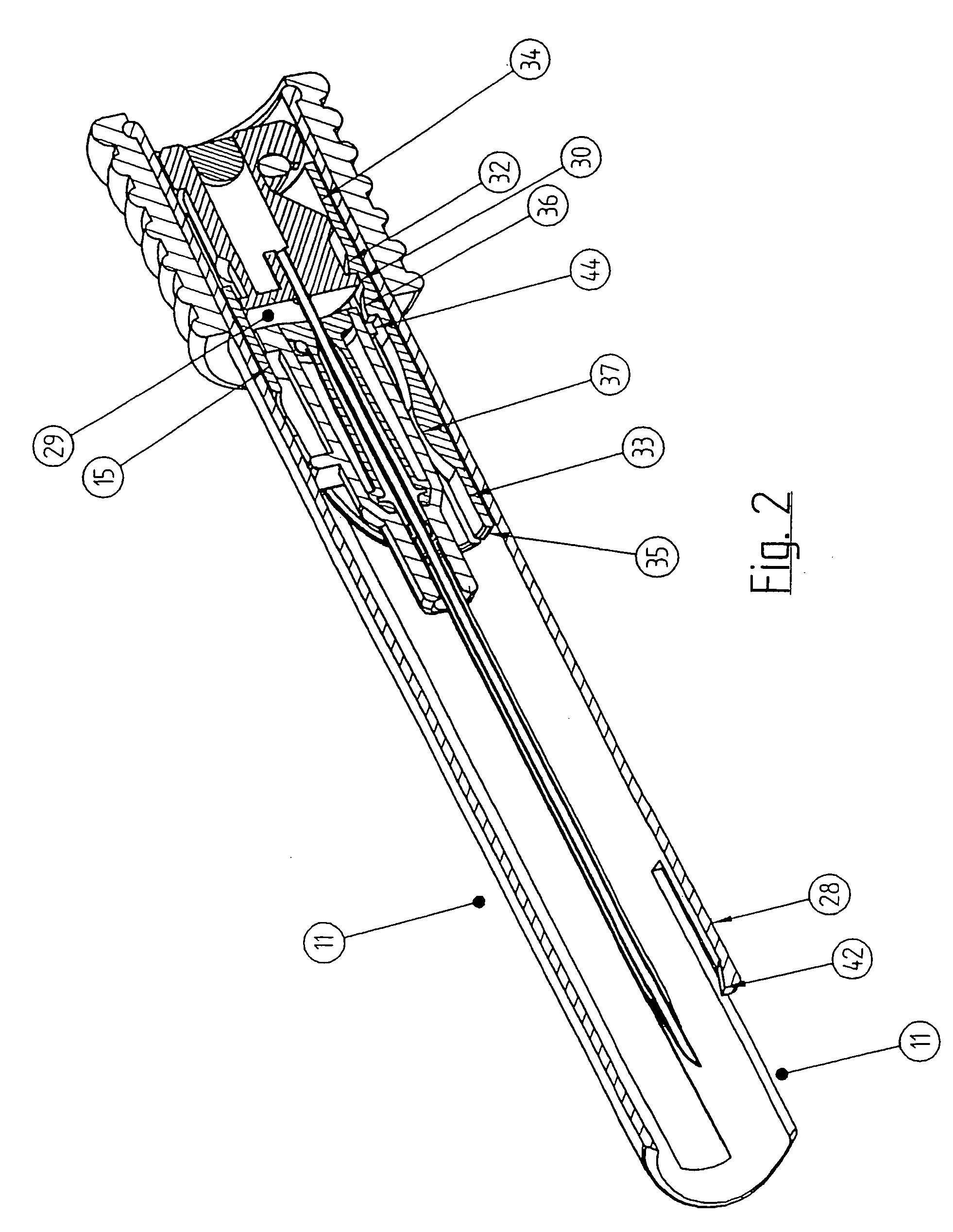Retractable needle assembly for a catheter and which uses an elastomeric member to retract the needle
- Summary
- Abstract
- Description
- Claims
- Application Information
AI Technical Summary
Benefits of technology
Problems solved by technology
Method used
Image
Examples
Embodiment Construction
[0046] Referring initially to FIG. 1 there is illustrated the various parts of the retractable needle assembly. The assembly comprises an outer body member 11, a needle assembly 12 which comprises a steel puncture needle 13 and a needle body 14, a separately formed collar 15, a needle assembly retraction means part of which comprises an end cap 16, and a cannula 17 which is more or less of standard design, but which contains an internal valve assembly 18.
[0047] In summary, and according to an embodiment of the invention, the needle body 14 is held within collar 15. Collar 15 (and the contained needle body 14) fits within outer body member 11. Outer body member 11 is formed with opposed elongate slots 19, and collar 15 contains opposed extending finger grippable profiles 20 which extend through slots 19. End cap 16 is fitted to the rear end 21 of outer body member 11. End cap 16 contains an elastomeric member 22 in the form of a U shaped elastic band or cord which fits about a hook 2...
PUM
 Login to View More
Login to View More Abstract
Description
Claims
Application Information
 Login to View More
Login to View More - R&D Engineer
- R&D Manager
- IP Professional
- Industry Leading Data Capabilities
- Powerful AI technology
- Patent DNA Extraction
Browse by: Latest US Patents, China's latest patents, Technical Efficacy Thesaurus, Application Domain, Technology Topic, Popular Technical Reports.
© 2024 PatSnap. All rights reserved.Legal|Privacy policy|Modern Slavery Act Transparency Statement|Sitemap|About US| Contact US: help@patsnap.com










